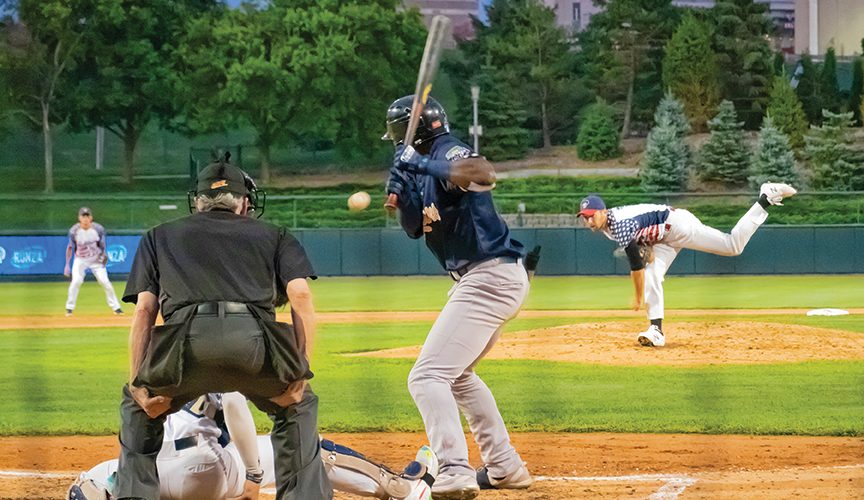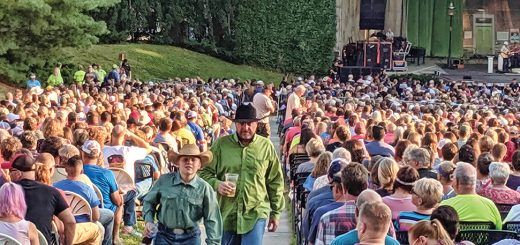Baseball, Softball and Lincoln

by Ken Hambleton
Baseball, softball and Lincoln are synonymous.
From the Haymarket Park, voted the best field in the American Association for 21 years, to the Doris Bair softball fields and Den Hartog and Sherman baseball fields, Lincoln has a love affair with baseball.
Dating back more than 120 years, Lincoln has seen the University of Nebraska baseball team grab a big piece of the local sports scene. For more than 110 years pro baseball has played a major role in local summer entertainment.
The Huskers are always in the hunt for a NCAA baseball tournament bid, and lately, the NU softball team has made big noise in the Big Ten Conference and made strides in the NCAA national softball tourneys, too.
Add in the Lincoln Saltdogs, an independent pro baseball team, strong local high school programs in baseball and softball, and there’s rarely a day without a reason to grab a bag of peanuts and pop and head to the ball park.
The Huskers won the Big Ten baseball tournament and have made runs the College World Series, produced more than two dozen major league players and are constantly in the hunt for an NCAA tournament bid.
“We have the best ball park and the best fans you could ask for here in Lincoln,” said Nebraska coach Will Bolt, whose team has shown steady improvement and reached the NCAA regional finals last season. “The future is bright, with the foundation we have built here. The facilities are top notch and getting better.”
NU softball coach Rhonda Revelle, whose team plays in Bowlin Stadium—a part of the Haymarket Park complex—says there are no better softball diamonds in college softball.
Charlie Meyer, president and general manager of the Saltdogs, agreed that the cooperation of Jim Abel and NEBCO, along with the city of Lincoln and the university, has given the city a stable, family-fun site for baseball.
“When you think about how this all came about 22 years ago, its hard to believe we’ve got a solid base for all the baseball the city gets from Haymarket Park,” he said. “The cooperation and the vision to create the park and give Lincoln baseball fans everything that’s good about baseball is pretty phenomenal.”
From 1881, as the first sport offered at the University of Nebraska, the Huskers (Antelopes, Old Gold Knights, previously) played in various fields, from Buck Beltzer and the Husker Diamond, on campus until 2002 when Haymarket Park was ready for them. (Note: one of the first games on campus was shortened because the lone bat for both teams broke).
Now, crowds as big as 8,000-plus fans still park the park for Big Ten Conference games and some premium non-conference games.
The Saltdogs have established themselves as the longest-lasting pro franchise in the city history of baseball that dates back to the 1886 Tree Planters, the 1895 Western Association championship team, and various renditions known as the Ducklings in 1906, the Rail Splitters, the Tigers, Antelopes, Links, Greenbackers, Rustlers, Athletics and the Chiefs through 1961, when pro baseball took a leave from Lincoln until the Saltdogs’ resurgence at the turn of the century.
Note: Lincoln also had one of the first Black baseball teams, the Giants, in the early 1900s, but rarely played in Lincoln.
“So much came together to make this all happen for the Huskers and the Saltdogs—clearing out a salt dome, a dump, building bridges from the Haymarket to the current park and creating a hub of sorts for the Lincoln bike-hike trails, with plenty of parking for all kinds of civic events, it’s pretty amazing,” said Meyer.
Bolt, who played for the Huskers, has created a coaching staff that now includes former Nebraska assistant Rob Childress, who was head coach at Texas A&M for 16 years.
That kind of leadership has led to posting one of the top 20 recruiting classes in college baseball the last few years. Last season, the Huskers had three players drafted by the pros and boast such current pros as Jake Meyers (Astros) and Aaron Bummer (White Sox).
With the return of Big Ten Freshman of the Year, Max Anderson, a plethora of returning starters, top recruits, two transfers and a junior college transfer, the Huskers are likely to fight for the top of the Big Ten and contend for a NCAA regional berth for the sixth time in the last eight years.
“We can see what life looks like at the top and we know that the future is pretty tangible because we have gone toe-to-toe with the best in college baseball,” Bolt said. “We’re not going to get rattled by much and we’re going to compete for the top of the college baseball world.”
Meyer said he thinks the future is promising, too.
“From all the select high school teams that play here in the summer, to the Junior Saltdogs programs, to Homer’s Heroes (a program for kids with special needs), to just providing a way for young people to dream about playing baseball, like running the bases after Saltdogs games, we have planted a seed that keeps growing for more baseball in Lincoln in the future,” he said.














Recent Comments